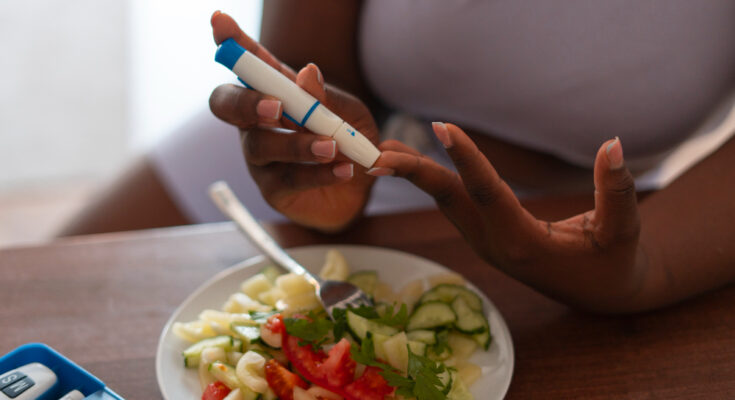How to Reduce Cholesterol: A Complete Guide
Cholesterol is a waxy, fat-like substance needed for the formation of healthy cells and certain hormones. However, high levels of cholesterol will likely cause heart attacks, strokes, and other serious health issues. Cholesterol levels must be kept in proper amounts to ensure the general well-being of a person, so this comprehensive guide proceeds to show you some of the natural methods of lowering cholesterol through a good diet, adequate weight control, and increased physical activity.
Defining Cholesterol
Cholesterol is moved with the bloodstream by two different kinds of lipoproteins, namely low-density lipoprotein (LDL) and high-density lipoprotein (HDL). LDL, very commonly known as “bad” cholesterol, can build up on artery walls, narrowing and clogging them. It, therefore, contributes towards atherosclerosis (hardening of the arteries). On the other hand, HDL, which is popularly referred to as “good” cholesterol, helps in recycling LDL cholesterol into the bloodstream and, therefore, can be very protective of the heart.
The target is to achieve a proper balance between these two types of cholesterol. The American Heart Association establishes the ideal range for total cholesterol at less than 200 mg/dL, with values for LDL at 100 mg/dL or lower and for HDL at over 40 mg/dL in men and at over 50 mg/dL in women.
Why Cholesterol is Important
High cholesterol is often referred to as a “silent” condition due to its lack of obvious symptoms. However, over time, raised cholesterol levels lead to serious health-issues including:
- Heart Disease: High cholesterol increases the risk of coronary artery disease when the blood vessels that supply oxygen and nutrients to the heart become blocked or narrowed.
- Stroke: Stroke comes when the cholesterol builds up to restrict blood flow to the brain.
- Peripheral Artery Disease: Cholesterol deposits can also restrict blood flow to the legs, bringing pain and mobility issues.
- High Blood Pressure: High cholesterol can also add to high blood pressure and put one at greater risk for heart disease.

Steps on Lowering Cholesterol
Now that one is aware of the risk of high cholesterol levels, it is time to put helpful things into place to lower cholesterol. These methods would not only help cut levels of cholesterol but also improve the heart.
1. Eat a Heart-Healthy Diet
Eating a heart-healthy diet is the first step toward lowering cholesterol. Certain foods will reduce LDL cholesterol and boost HDL cholesterol. Here are the changes to be made:
- Boost Soluble Fiber: Soluble fiber has the knack for lowering LDL cholesterol by binding with the cholesterol molecules and getting them out of the body. Foods rich in soluble fiber include oats, barley, beans, lentils, some fruits (for example, apples, pears, and citrus fruits), and some vegetables (like carrots, Brussels sprouts, and sweet potatoes).
- Select Healthy Fats: Replace some saturated fats (often found in red meat, butter, and full-fat dairy products) with polyunsaturated fats. Some foods contain monounsaturated or polyunsaturated fats, which are fats that will lower your cholesterol while raising your HDL: for instance, olive oil, avocado, and fatty fish such as salmon, mackerel, and sardines.
- Eliminate Transfats: Transfats raise LDL cholesterol while lowering HDL cholesterol. Most often found in processed foods and baked goods, they are best left tire-marked emotions. It is best to avoid prepared foods labeled partially hydrogenated in order to pull the trans fats out of the diet.
- A diet rich in fruits, vegetables, whole grains, and legumes tends to provide some decrease in the cholesterol level. Besides this, there are some fortified foods like margarine and orange juice that supply plant sterols and stanols that inhibit cholesterol absorption.
- Cut down on Refined Carbohydrates and Sugar: Refined carbs, white bread, pasta, and sugary items lead to higher triglycerides and lower HDL cholesterol. Encourage a diet rich in whole grains, coupled with limiting the intake of sugar for cholesterol management.
2. Exercise Regularly
One of the best ways to raise HDL cholesterol and support heart health is through exercise. It provides:
- Increase in HDL Cholesterol: Cardiovascular exercise such as brisk walking, running, biking, or swimming can increase HDL cholesterol levels and help get rid of excess LDL cholesterol from the bloodstream.
- Reduction in LDL Cholesterol: Exercise routines and strength-training principles can help lower LDL cholesterol levels and triglycerides.
- Weight Control: Exercise while keeping the weight might also help more control over cholesterol levels. An overweight or obese person drops levels of LDL cholesterol and rises in HDL levels.
According to the recommendations of the American Heart Association, individuals should do aerobic exercises for a total of 150 minutes per week averaged across moderate intensity or other combinations, including muscle-strengthening activities on two or more days in the week.

3. Maintain a Healthy Weight
The extra weight is the direct cause for high cholesterol levels in the first case. Losing weight can modify your cholesterol level:

- Lowering LDL cholesterol--Even a small amount of weight loss (5-10% of your body weight) will lead to lowering of LDL cholesterol levels.
- Raising HDL cholesterol: Weighing less will leave you with a larger amount of HDL cholesterol, which is another point in favor of heart health.
A healthy balanced diet and exercise are the keys for healthy, sustainable weight loss. Aim for 1 to 2 pounds of weight loss per week for successful weight management.
4. Quit Smoking
Smoking is one of the biggest risk factors for heart disease and affects cholesterol levels in a number of negative ways. Smoking lowers HDL cholesterol levels and damages the arteries allowing LDL cholesterol to build up.

The immediate and long-term benefits of quitting smoking include:
- With an increase in the HDL cholesterol levels taking place weeks after quitting, the chances of heart disease will become less.
- These steps are not only going to cause the circulatory system to function better, but quitting will also keep one out of the risk of atherosclerosis, which is due to the blockage of plaque in the arteries.
Should you find it tough to quit smoking, consider enlisting the help of your doctor for nicotine replacement therapy or a smoking-cessation program.
5. Moderate Drinking
Drinking moderately may yield health benefits; it may raise HDL cholesterol. Unfortunately, these advantages may vanish if excessive alcohol is consumed. Excessive alcohol increases triglycerides and body weight, both of which are detrimental to cholesterol levels.
The American Heart Association recommends two drinks a day for men and one drink per day for women. One drink is counted as equal to: 12 ounces of beer, 5 ounces of wine, or 1.5 ounces of distilled spirits.
6. Think about Medicines (If You Really Have To)
If making the necessary lifestyle changes does not help lower your cholesterol, your healthcare provider may recommend medications. Statins are by far the most commonly prescribed cholesterol-lowering medications. These medications block cholesterol production in the liver and, therefore, reduce LDL cholesterol. Beyond that, other medications can be prescribed based on your individual needs and risks.
It is essential to discuss with your physician the benefits and side effects of the medicines before starting treatment. In most cases, the best result comes from using lifestyle changes associated with medication.
Conclusion
A decrease in cholesterol levels is required for a heart and nutritional intervention in preventing heart disease. Heart-healthy eating needs to be combined with physical activity, maintaining a healthy weight, not smoking, and drinking alcohol only in moderation, to increase your chance of lowering your cholesterol levels. In some cases, it might be appropriate to discuss the need for a certain kind of medication. Be sure to consult a physician for direction in dealing with the issue.
The possibility of lowering cholesterol means the chance of enjoying a long life in good health without the risk of heart disease and other related illnesses.
Read more https://venombil.com/how-to-maintain-a-healthy-diet/
read morehttps://www.buzzrx.com/blog/how-to-reduce-cholesterol-in-7-days





